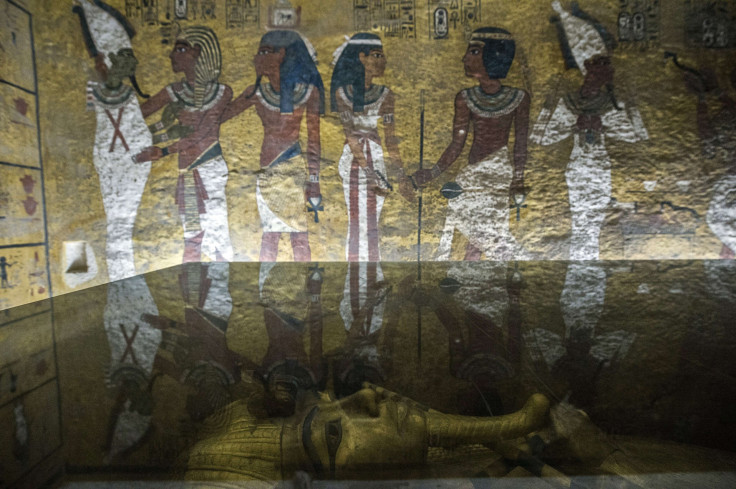Unearthing Nefertiti: New Evidence Points To Hidden Chambers In King Tut's Tomb

Archaeologist Nicholas Reeves' hypothesis that Nefertiti's burial chamber is hidden in King Tut's tomb gained traction Monday. A thorough investigation revealed possible evidence of two previously undiscovered chambers in the boy king's final resting place, but archaeologists won't have a definitive answer for a few months pending the approval of the Egyptian Ministry of State for Antiquities.
"To be honest, I feel numb," Reeves told National Geographic. Monday was the first time he and other archaeologists examined King Tut's tomb in person. Egyptian Antiquities Minister Mamdouh Eldamaty was on hand for the exploratory mission.
Reeves, a resident scholar at the University of Arizona, theorized in a paper published in August that King Tut's tomb was originally the burial chamber of Nefertiti. The sudden death of Tutankhamun at age 19 led to the retrofitting of Nefertiti's tomb to make room for Tut. Nefertiti was the wife of Akhenaten, the boy king's father, but she was not Tut's mother.
Reeves found evidence of two doors in high-definition scans of Tut's tomb by Factum Arte that are available online. The 3D scan of the west wall has features that look like a door. The 3D scan of the north wall revealed a thin crack that could indicate a section that was plastered over.
In Reeves' first physical examination of King Tut's tomb, the archaeologist was able to find the features found in the scans along with a few other interesting pieces of evidence. "I am now 70 percent certain that we are going to find something," Eldamaty said, according to Agence France-Presse. Two types of plaster could be seen on the north wall, National Geographic reported. Gritty plaster possibly used to cover a door was similar to material used to cover another door discovered by Howard Carter, the Egyptologist who found Tut's tomb.
The next step for Reeves' theory requires the use of radar to peer behind the walls of the tomb. If the thermal imaging and radar reveal a hollow area indicating a passageway or chamber, the Antiquities Ministry will have to make a very difficult decision. The north wall is a priceless painting that can't be damaged. Approval to use the radar equipment to investigate King Tut's tomb could come as early as November.
© Copyright IBTimes 2024. All rights reserved.











